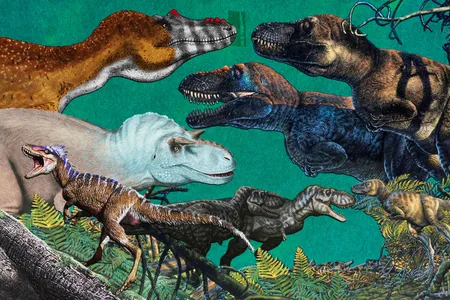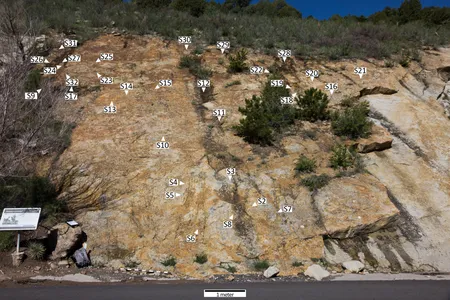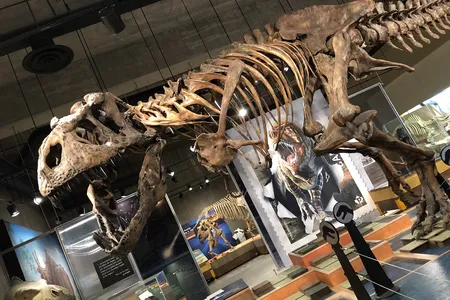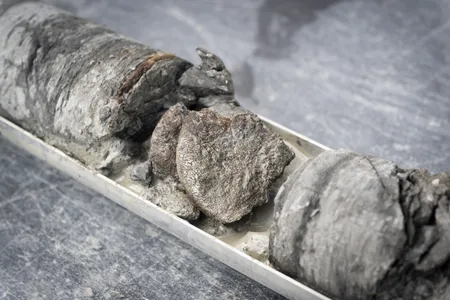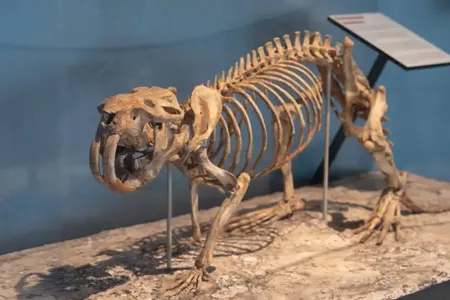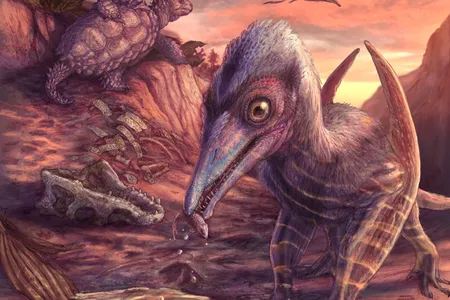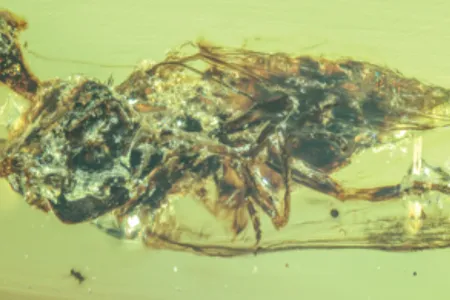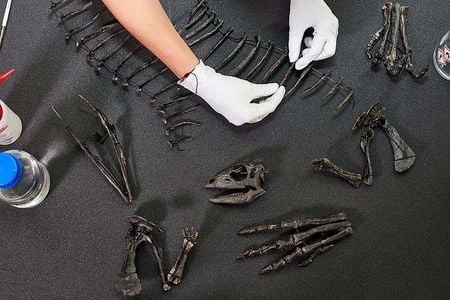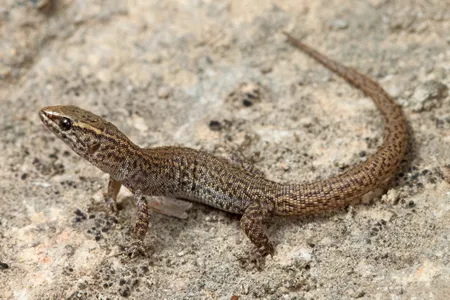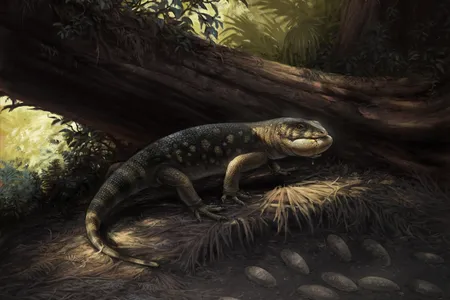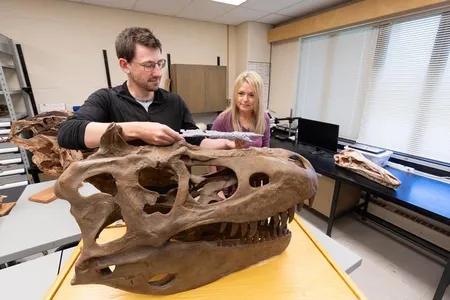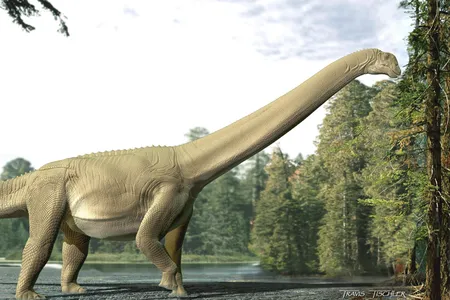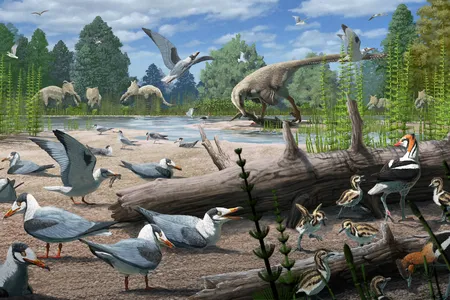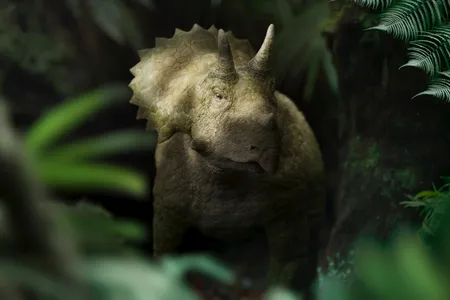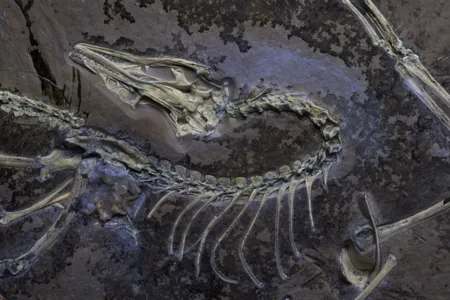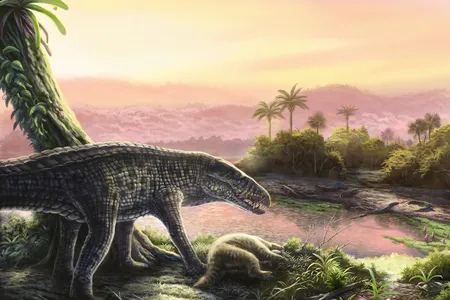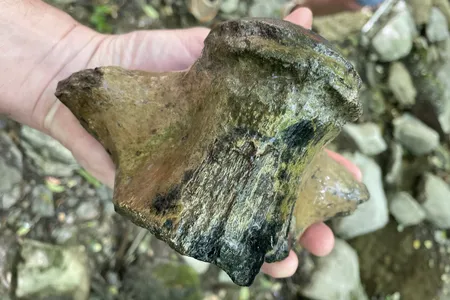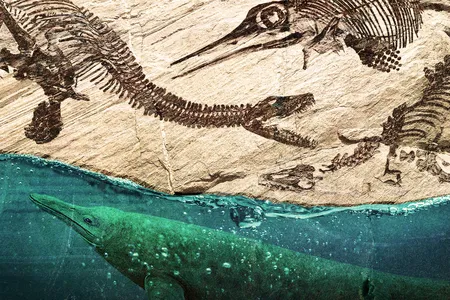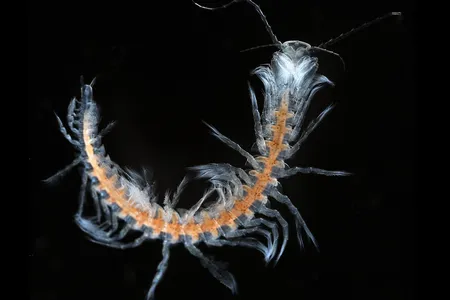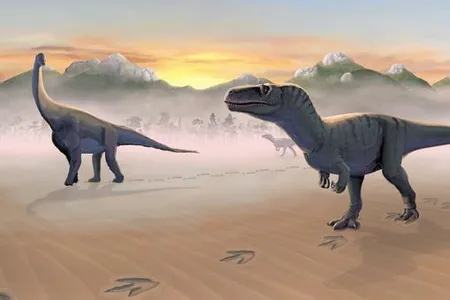Meet Ten Tyrannosaurs That Came Before T. Rex, From Small, Feathery Creatures to 30-Foot-Long Bone-Crushers
Everyone knows the famous tyrant lizard king, but its relatives amaze, too
Dinosaurs Gathered to Perform Mating Dances With Kicks and Spins at This Site in Colorado—and You Can Go See It for Yourself
Paleontologists have discovered what appears to be one of the largest dinosaur courtship arenas in the world, just 15 miles west of Denver
Preserved Blood Vessels Discovered in a Rib Bone From the World’s Largest T. Rex Could Shed Light on How Dinosaurs Healed
Scotty, a specimen unearthed in Canada, was probably injured in a fight, then died several months later
‘Nothing Short of Magical’: Scientists Discover a Dinosaur Bone Nearly 800 Feet Beneath a Parking Lot at a Denver Museum
The partial vertebra appeared inside a 2.5-inch-diameter column of rock that researchers drilled, earning the title of the oldest and deepest dinosaur fossil found in Denver
Bear-Sized Giant Beavers Once Roamed North America, and They’re Now the Official State Fossil of Minnesota
The large, extinct creatures roamed the Twin Cities area more than 10,000 years ago and could grow to more than 200 pounds
A Bone Bed From the Dawn of the Dinosaurs Has Revealed the Oldest Known Pterosaur Found in North America
Fossil surprises abound in new research that unearths the history of the Triassic Period
Rare Amber Fossils Capture ‘Zombie’ Fungus Infecting Insects During a Time When Dinosaurs Still Walked the Earth
An ant and fly from the Cretaceous period offer insights into the history of Ophiocordyceps, the fungal parasite made popular by HBO’s “The Last of Us”
‘Enigmatic’ Dog-Sized Dinosaur Reveals a New Species That Scampered Around Jurassic North America
The speedy, plant-eating creature lived in what is now Colorado roughly 150 million years ago, and its skeleton went on display in London this week
These Lizards Mysteriously Survived the Asteroid Strike That Killed the Dinosaurs—and Their Descendants Are Still Alive Today
Small and elusive night lizards probably persisted because they have slow metabolisms and like to hide out in rock crevices, a new study suggests
A Jar of Fossil Bones Long Stored at a Museum Led Scientists to Discover a Goblin-Like Lizard From 76 Million Years Ago
Fossils described in a new study speak to a previously unknown large-bodied lizard diversity that existed alongside dinosaurs
These ‘Dragon Prince’ Fossils Spent Decades in Museum Drawers. Now, They Could Rewrite the T. Rex Family Tree
Two partial skeletons housed in a Mongolia museum were reexamined by researchers and found to represent a previously unknown species
First Fossil Evidence That Sauropods Were Herbivores Supports a Widespread Assumption About the Long-Necked Dinosaurs
A recent discovery of a dinosaur’s preserved gut contents offers the first direct proof that sauropods were plant-eaters
Scientists Find the First Evidence of Birds Nesting in the Arctic Alongside Dinosaurs
The researchers analyzed rare fossils of hatchling birds found in northern Alaska, which offered the earliest evidence of the creatures reproducing in a polar region
‘Walking With Dinosaurs’ Reimagined: A New Era of Prehistoric Discovery
More than 25 years later, PBS is bringing the groundbreaking series back with a bold new vision grounded in today’s science
The Famous, Feathered Dinosaur Archaeopteryx Could Fly, Suggests New Study of a ‘Beautifully Preserved’ Fossil
The Chicago Archaeopteryx features more soft tissue and delicate skeletal details than any known fossil of its kind, and paleontologists discovered it has a set of feathers key to flight in modern birds
Fossils Reveal Enormous, Crocodile-Like Reptiles Survived for Millions of Years Longer Than Previously Thought
New discoveries in the Dominican Republic suggest sebecids roamed the Caribbean as recently as 4.5 million years ago, long after they vanished from South America
Geologists Stumble Upon Remains of Giant ‘Sea Monster’ in Mississippi, Likely the Largest Mosasaur Ever Identified in the State
Researchers uncovered one vertebra, and based on its size, they estimate the massive creature was at least 30 feet long when it roamed the shallow seas that covered the region roughly 66 million years ago
From Massive Eyes to Shark-Like Tails, Seven Amazing Adaptations That Helped Prehistoric Reptiles Thrive at Sea
The creatures cruised the world’s oceans with features we often associate with marine mammals, such as coats of blubber and the ability to birth live young
You Might Think of Shrimp as Bugs of the Sea. But a Remarkable Discovery Shows the Opposite: Bugs Are Actually Shrimp of the Land
A recent study suggests that insects branched out from crustaceans on the tree of life
‘Important’ Dinosaur Tracks Found in Scotland Suggest Carnivores and Their Prey Drank From the Same Watering Hole
Researchers analyzed 131 fossilized impressions on the Isle of Skye, some of which were previously considered fish burrows
Page 1 of 77
